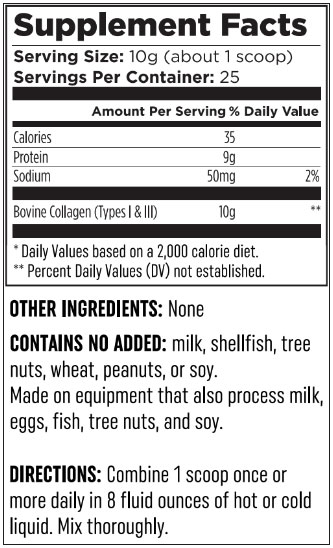7 reasons everyone over 50 should be taking THIS kind of protein
Doctor reveals little-known tips for restoring bone density, soothing joint pain, and regaining mobility


If you're over the age of 50, male or female...
If the words "bone on bone" are all too familiar...
If you've ever had a DEXA scan...
Then you're already “in the know” — and your bone integrity might be a constant worry.
But for those who don't know, declining bone and joint health is a major reason we feel sore and stiff in the mornings…¹
…And that stiffness is a warning that we're 1 fall away from life changing completely.
As a doctor of physical therapy, I've seen the impacts first-hand... more times than I can count.
I've seen patients go into debt to renovate their first floor… all because they can't make it upstairs to their master bedroom anymore.
I've had people come to me, feeling hopeless that their doctor has recommended yet another surgery.
But most importantly, I've seen people achieve incredible reversals by focusing on collagen (a certain kind of collagen).
I’ll show you why it worked for them — and why it could help you regain independence and mobility, even if you think it's too late.
I do believe putting this in my coffee has helped not only my knees but general well being.
I began several years ago with one scoop but recently in 2021 began putting two scoops in my morning cup of coffee… Doing well at 86 years but cannot say how I would be without it. Don’t intend to stop!

1. What you “know” about calcium… probably isn’t true
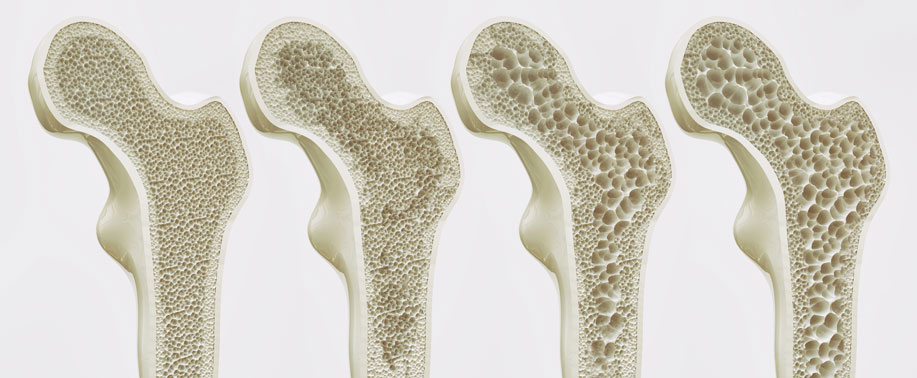
Odds are good that you’ve at least considered calcium supplements. After all, we’re told that our bones are mostly calcium.
I hate to say it, but that’s misleading.
You see, bone is a complex tissue. It’s true that calcium gives it strength and density, and that calcium is the biggest part of our bones by weight… but that calcium needs a structure to stick to.
That structure? It’s the organic, living part of your bones… and it’s 90% collagen.²
Without enough collagen, calcium has nowhere to go — and in some cases, can build up in blood vessels, causing arterial calcification and kidney stones.³
It goes without saying, but you don’t want that! It’s one of the reasons that some experts tell postmenopausal women to AVOID calcium supplements.⁴
Believe it or not, one of the most comprehensive studies ever — conducted in Britain on over 18,000 women — concluded that calcium and vitamin D supplements do not reduce the risk of hip fractures in older women.⁴
The same Harvard review concludes that most people are taking TOO MUCH calcium — so how did we get here?
2. Where the Calcium Myth started — and why collagen is the real “bone density hero”
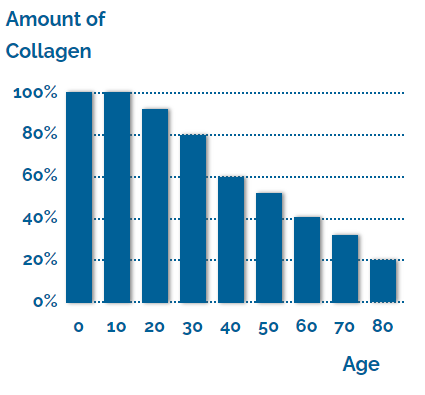
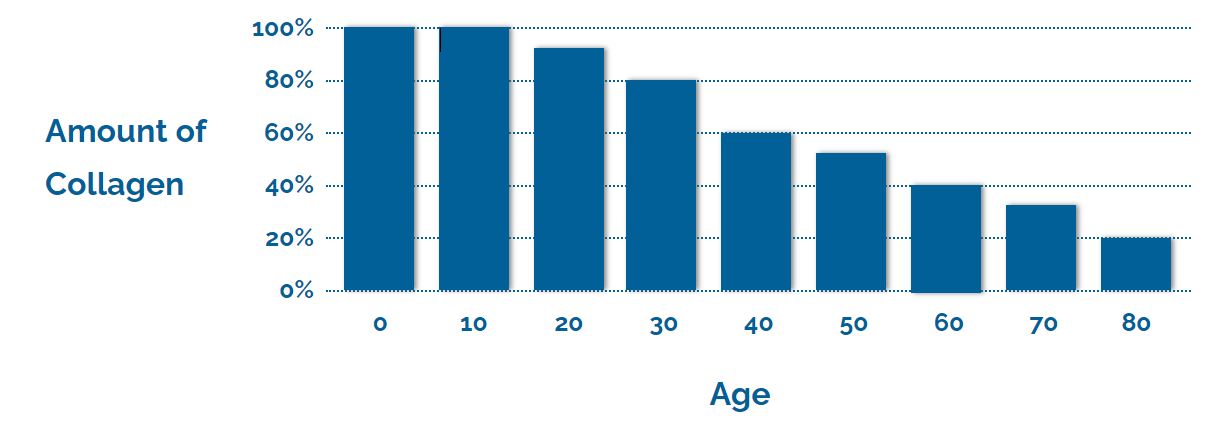
As it turns out, two studies in the late 1970s are the source of the Calcium Myth. In both studies, postmenopausal women were given calcium supplements — for a few weeks.
At the end of the studies, the women were tested and found to have more calcium in their blood — they didn’t even really look at bone density!⁴
The studies were too short and narrow to really give us any information — but we spent the next 40 years blindly believing this Calcium Myth.
More recent and thorough studies have shown that collagen is the real hero here — but more on that in a second.
Most people don’t know this, but our bodies naturally produce collagen…
But after the age of 30, we produce 1-2% less collagen per year. By the age of 60, most people make HALF as much collagen as they did in their youth.⁵
And it’s not so easy to get collagen into your diet. It’s found in parts of the animal that you normally DON’T eat… like bone, cartilage, tendons, and skin.⁶
See the problem? In our part of the world, nobody eats those parts of the animal.
That means an increased risk of bone fractures… and like I said, most people over 55 are one fall away from a drastic reduction in their quality of life.

3. Collagen supplements may actually help our bones reverse the effects of aging

Collagen supplements help you replace what you stop producing — and the studies speak for themselves.
In one study that of 103 postmenopausal women, 66 women were given 5 grams of collagen daily for 12 months.
The women who took the collagen had an increase of up to 7% in their bone mineral density (BMD), compared to women who did not consume collagen.⁷
Since bone mineral density drops by about 1-2% per year after menopause, that means these women got back 4-5 years of bone density… in only 12 months!
Name any other supplement that can offer that kind of return. Go ahead, I’ll wait. 🙂
4. Get ready to see youth return to hair, skin, nails, digestion… and more

Now, collagen isn’t just found in your bones — it’s the most abundant protein in your body, and provides strength and support to your skin, joints, muscles, hair, and blood vessels.
It’s actually named after the Greek word for “glue,” because it truly holds your body together.⁸
Hundreds of studies have examined the benefits of daily collagen supplementation.
And the results are simply astounding:
- After 12 weeks, women taking a daily collagen supplement reported better skin hydration and a significant reduction in wrinkle depth.⁹
- In a 24-week study of 25 participants, only 2.5 grams of collagen daily were needed to help nails grow faster and experience fewer breaks.¹⁰
- When 31 healthy adults took 16 grams of collagen daily for six months, they reported a significant reduction in measures of artery stiffness by the end of the study.¹¹
My DEXA (osteopenia) has begun improving, my digestion has gotten better, and I'm already feeling more energized!!
I can hardly wait to see how I'll feel in two more months!!

5. Buyer beware… not all types of collagen are created equal.
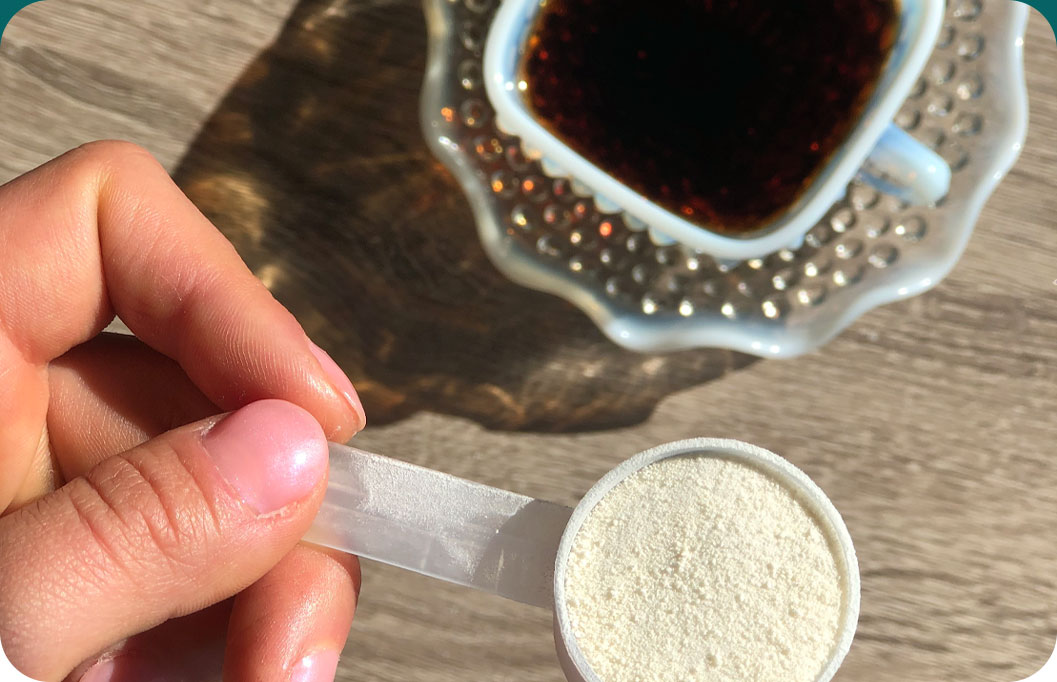
You knew the answer wouldn’t be so simple, right?
There are actually 28 different types of collagen in your body. But 90% of it is “Type 1,” which is found in your skin, bones, and blood vessels.¹²
Type III is also crucial, as it makes up your muscles and digestive system.
To maximize the amazing health benefits of collagen, you should search for Types I and III.
“Marine collagen” only gives your body Type I collagen, so it doesn’t help relieve stiffness, muscle pain, and digestive issues like Type III.
To get Type III collagen, you need to turn to “bovine collagen” — but even then, not all supplements are equal. What were those cows fed? What kind of lives did they lead?
Those questions around grass-fed, pasture-raised cows don’t just make a difference to your meat — they indicate a collagen supplement that’s clean, healthy, and highest quality.
6. We found other collagen powders to be “all marketing” — so we designed one that suits your needs
As a doctor of physical therapy, I’ve helped thousands of people regain their mobility, independence, and confidence through movement…
But the biggest changes — more strength, more energy, more youthfulness — occur in people over 55 who take 20 grams of collagen daily.
But I had trouble sourcing the right kind of collagen. If it had types I and III, then the source wasn’t of high quality — or worse, I’d find a powder that was clumpy and didn’t mix well.
It seemed like other brands were spending all their money on influencers and celebrities, instead of giving you the best possible product.
So I sought out ranchers that only raise grass-fed, pasture-raised cows… to turn their “leftovers” into quality collagen peptides, helping them waste less of the animal.
Then I tweaked the formula again and again until I had something that would easily dissolve in coffee, milk, tea, water… pretty much any liquid, with no aftertaste — just a smooth, creamy texture.
Since then, hundreds of thousands of people have fallen in love with their daily health ritual… and we’re at over 6,000 positive reviews.


Nothing else has worked like this before!

|
NativePath
Grass-Fed Collagen |

NativePath |

Skinny Fit |

Vital Proteins |

Ancient Nutrition |
|---|
| Made In A Good Manufacturing Practice (GMP) Certified Facility | ||||
| Pasture-Raised | ||||
| 100% Hydrolyzed | ||||
| Dissolves Clump-Free | ||||
| 10 Grams Of Collagen Per Scoop | ||||
|
Contains Only 1 Ingredient
(No Added Ingredients) |
||||
| Uses Only Type I & III Fibers (Fo Filler Fibers) | ||||
| Sourced Only From Bovine Hide (No Marine, Egg, Or Chicken Sources) |
7. Take the 60 Day Collagen Challenge and feel the difference for yourself
I’m a founder of NativePath, and I’m proud of the way that we’ve transformed hundreds of thousands of lives.
If you want to make a small change that will add quality to every single day of your life, then I can’t recommend grass fed collagen enough.
You’ve been waiting for it, so here’s the catch: all those studies I mentioned? They indicate that results really start to kick in after 2-3 months.
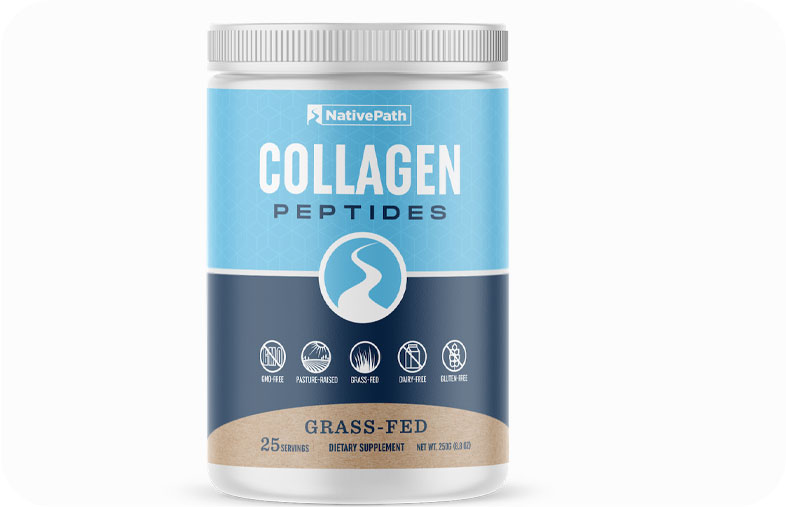
That’s the reason I recommend you start with 3 jars of NativePath Grass Fed Collagen Peptides.
There’s two reasons for this:
- Studies show a huge difference in outcomes between 10 and 20 grams of daily collagen — so I recommend starting with 2 scoops a day to see the results you want.
- With 3 jars, you can take 20 grams of collagen a day for 6 weeks — and then decide if it was worth it to you or not.
Try it for 60 days, then let me know how it worked out for you! (Seriously, send an email to support@nativepath.com. I read them, and I or my team will get back to you.)
Thanks to our 60-day money back guarantee, this is a risk-free choice.
After the 6 weeks is up, you’ll still have 2 weeks to decide if NativePath Grass Fed Collagen was worth the money.
Here’s how to take the 60 Day Collagen Challenge…
And the results are simply astounding:
- Click the button below to be taken to our official website. Choose your package and whether you’d like to subscribe.
- Place your order through our secure payment platform
- Wait a few days for your collagen to arrive (shipping is fast and FREE in the USA)
- Take 2 scoops every day for at least a month. Take before-and-after pictures of your face and hands, because that’s where most people see an improvement first
- After 60 days, ask yourself… “how do I feel? Am I better off with this in my life?” Heck, get a DEXA scan and ask if you’re happy with the results.
If the answer is “no,” contact us for a refund.
When you’re ready to take the challenge, just click the button below to get started.
Remember: your collagen levels drop 1 -2% with each passing year. And I’ve known hundreds of people who thought they had all the time in the world, but were actually “1 fall away…”
Yours in health,


Dr. Chad Walding, DPT
1. https://pubmed.ncbi.nlm.nih.gov/12612169/
2. https://depts.washington.edu/bonebio/ASBMRed/matrix.html
3. https://pubmed.ncbi.nlm.nih.gov/12612169/
4. https://www.health.harvard.edu/staying-healthy/how-much-calcium-do-you-really-need
5. https://pubmed.ncbi.nlm.nih.gov/7336713/
6. https://pubmed.ncbi.nlm.nih.gov/16076145/
7. https://www.ncbi.nlm.nih.gov/pmc/articles/PMC5793325/
8. https://www.merriam-webster.com/dictionary/collagen
9. https://www.jmnn.org/article.asp?issn=2278-1870;year=2015;volume=4;issue=1;spage=47;epage=53;aulast=Borumand
10. https://pubmed.ncbi.nlm.nih.gov/28786550/
11. https://www.ncbi.nlm.nih.gov/pmc/articles/PMC5429168/
12. https://pubmed.ncbi.nlm.nih.gov/27410733/
1200 S Brand, Ste 184, Glendal, CA, 921204 United States
Toll-free: 1-800-819-2993

